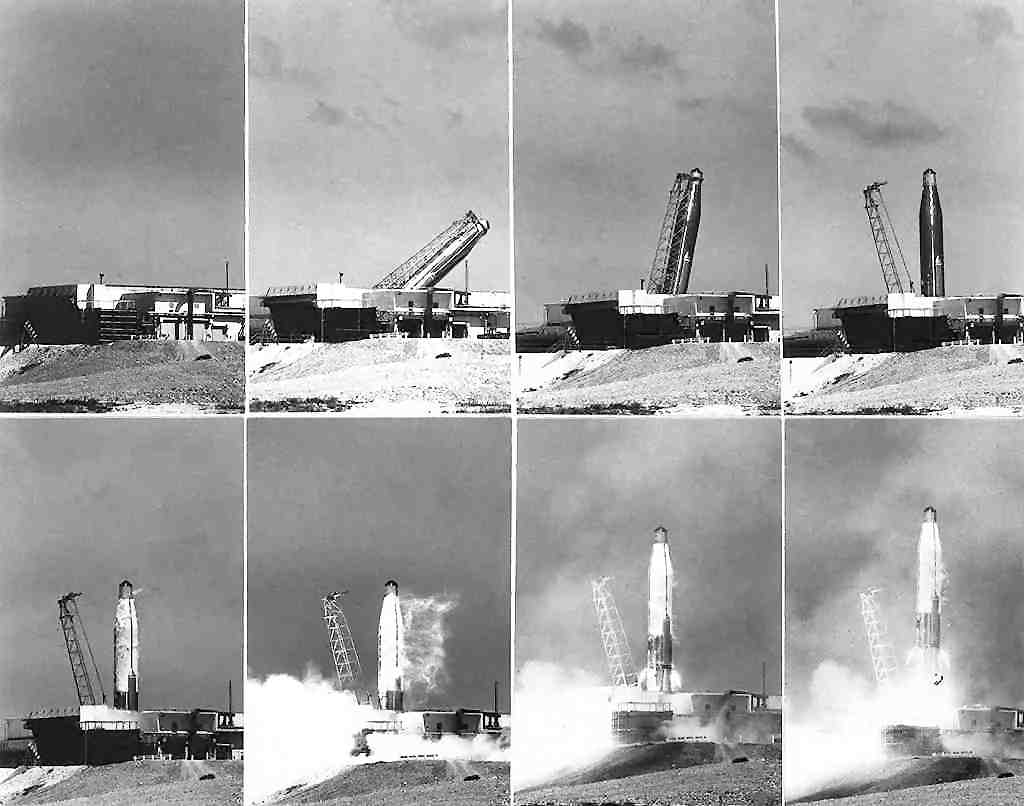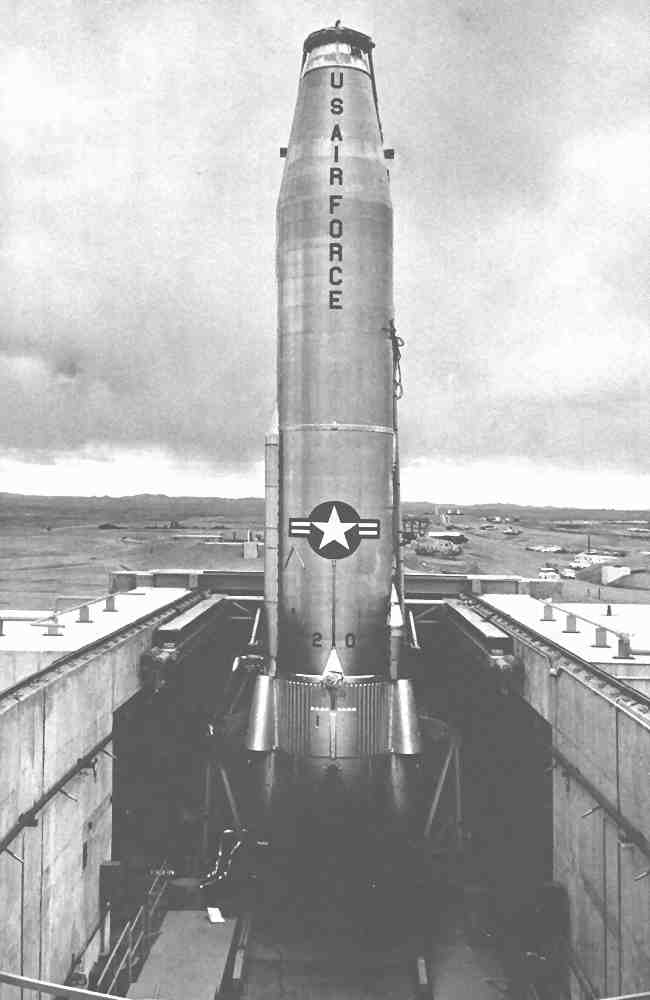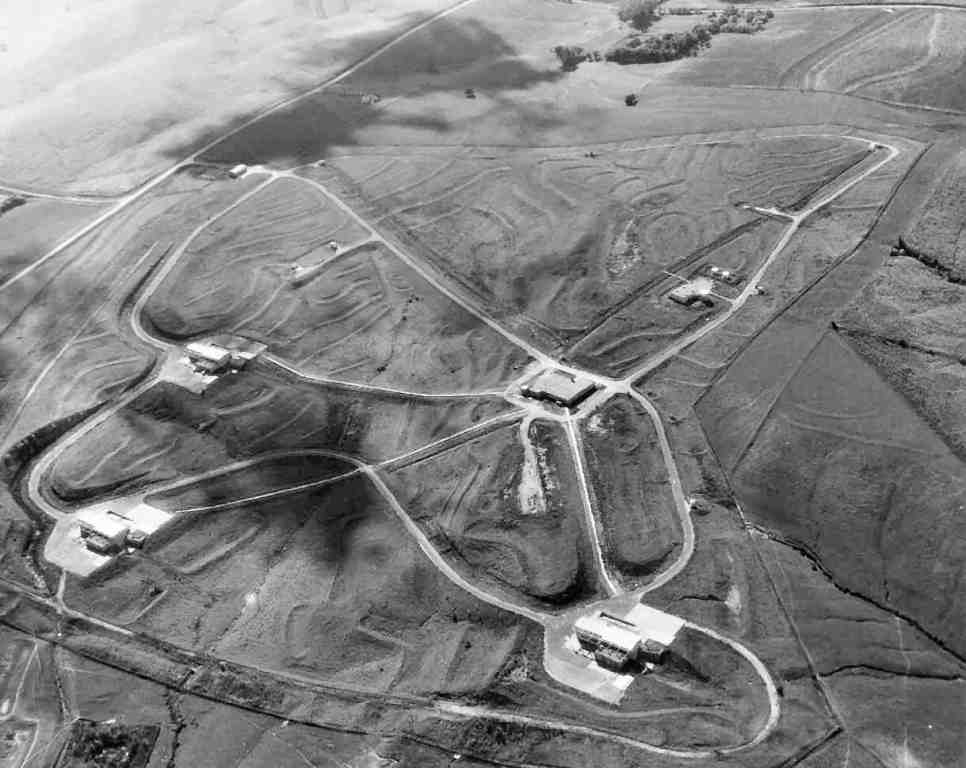SM-65 Atlas ICBM (아틀라스 대륙간 탄도탄) - 8 [D형]
미시건들개 | 2005-12-08 13:58:15
조회 1717 | 추천 0 | 다운로드 10
The Atlas is a venerable line of space launch vehicles built by Lockheed Martin. Originally designed as an ICBM in the late 1950s, the Atlas is today used as a launch platform for commercial and military satellites, and other space vehicles.
History
The Atlas, first tested in 1959, was the United States' first successful ICBM (Intercontinental Ballistic Missile). It was a "1.5 stage", liquid-fueled (LOX and RP-1) rocket, with three engines producing 1,590 kN of thrust.
The missile was originally given the military designation "XB-65", thus making it a bomber; from 1955 it was redesignated "SM-65" and, from 1962, it became "CGM-16". This letter "C" stood for "coffin" or "Container", the rocket being stored in a hardened container; it was prepared for launch by being raised and fueled in the open. The Atlas-F (HGM-16) was stored vertically underground, but launched after being lifted to the surface. The Atlas never was used in a missile silo, deep underground. From the mid 1960s, the Atlas (and its 'bigger brother', the Titan) were phased out in favour of the LGM-30 Minuteman, a solid-fuelled rocket which could be stored for long periods and launched, without fuelling, at the turn of a key.
Though never used in combat, the Atlas was used as the expendable launch system for the Mariner space probes used to study Mercury, Venus, and Mars (1962–1973); and to launch ten of the Mercury program missions (1962–1963). The Mercury-Atlas missions resulted in the first American to orbit the earth (Lt. Col. John H. Glenn Jr.) in February of 1962. (Major Yuri A. Gagarin, a Soviet cosmonaut, was the first human in orbit on April 12, 1961.) Atlas launched the Agena Target Vehicles used during the Gemini program. Direct Atlas descendants continue to be used as satellite launch vehicles into the 21st century.
Atlas was suggested for use by the United States Air Force in what became known as Project Vanguard. This suggestion was ultimately turned down, however, as Atlas would not be operational in time and was seen by many as being too heavily connected to the military for use in the U.S.' IGY satellite attempt.
Atlas, named for the Atlas of Greek mythology, got its start in 1946 with the award of a Army Air Forces research contract to Convair for the study of a 1,500 to 5,000 mi. (2,400 to 8,000 km) range nuclear armed missile. This was the MX-774 or Hiroc project. The contract was canceled in 1947 but the Army Air Forces allowed Convair to launch the three almost-completed research vehicles using the remaining contract funds. The three flights were only partially successful. However they did show that balloon tanks, and gimbaled rocket engines were valid concepts.
History
The Atlas, first tested in 1959, was the United States' first successful ICBM (Intercontinental Ballistic Missile). It was a "1.5 stage", liquid-fueled (LOX and RP-1) rocket, with three engines producing 1,590 kN of thrust.
The missile was originally given the military designation "XB-65", thus making it a bomber; from 1955 it was redesignated "SM-65" and, from 1962, it became "CGM-16". This letter "C" stood for "coffin" or "Container", the rocket being stored in a hardened container; it was prepared for launch by being raised and fueled in the open. The Atlas-F (HGM-16) was stored vertically underground, but launched after being lifted to the surface. The Atlas never was used in a missile silo, deep underground. From the mid 1960s, the Atlas (and its 'bigger brother', the Titan) were phased out in favour of the LGM-30 Minuteman, a solid-fuelled rocket which could be stored for long periods and launched, without fuelling, at the turn of a key.
Though never used in combat, the Atlas was used as the expendable launch system for the Mariner space probes used to study Mercury, Venus, and Mars (1962–1973); and to launch ten of the Mercury program missions (1962–1963). The Mercury-Atlas missions resulted in the first American to orbit the earth (Lt. Col. John H. Glenn Jr.) in February of 1962. (Major Yuri A. Gagarin, a Soviet cosmonaut, was the first human in orbit on April 12, 1961.) Atlas launched the Agena Target Vehicles used during the Gemini program. Direct Atlas descendants continue to be used as satellite launch vehicles into the 21st century.
Atlas was suggested for use by the United States Air Force in what became known as Project Vanguard. This suggestion was ultimately turned down, however, as Atlas would not be operational in time and was seen by many as being too heavily connected to the military for use in the U.S.' IGY satellite attempt.
Atlas, named for the Atlas of Greek mythology, got its start in 1946 with the award of a Army Air Forces research contract to Convair for the study of a 1,500 to 5,000 mi. (2,400 to 8,000 km) range nuclear armed missile. This was the MX-774 or Hiroc project. The contract was canceled in 1947 but the Army Air Forces allowed Convair to launch the three almost-completed research vehicles using the remaining contract funds. The three flights were only partially successful. However they did show that balloon tanks, and gimbaled rocket engines were valid concepts.











댓글 [0]